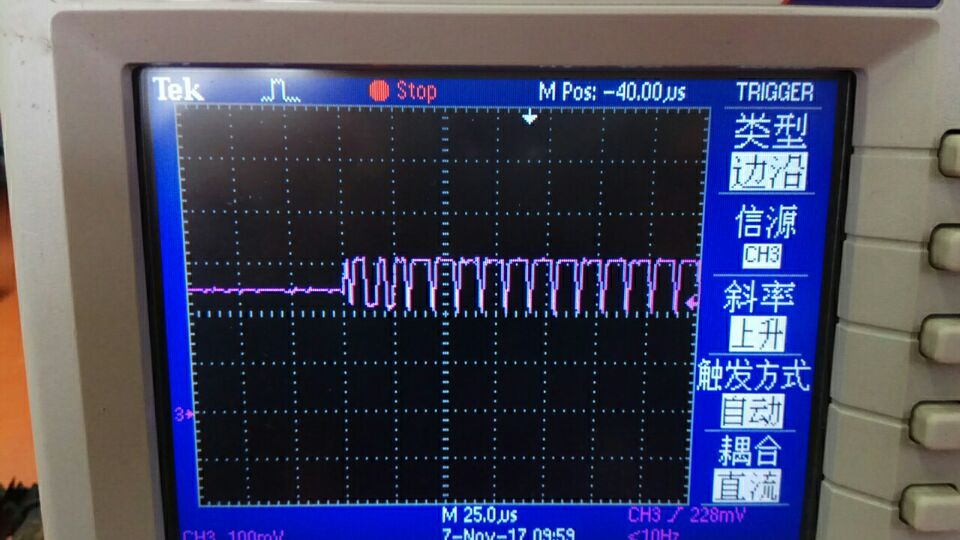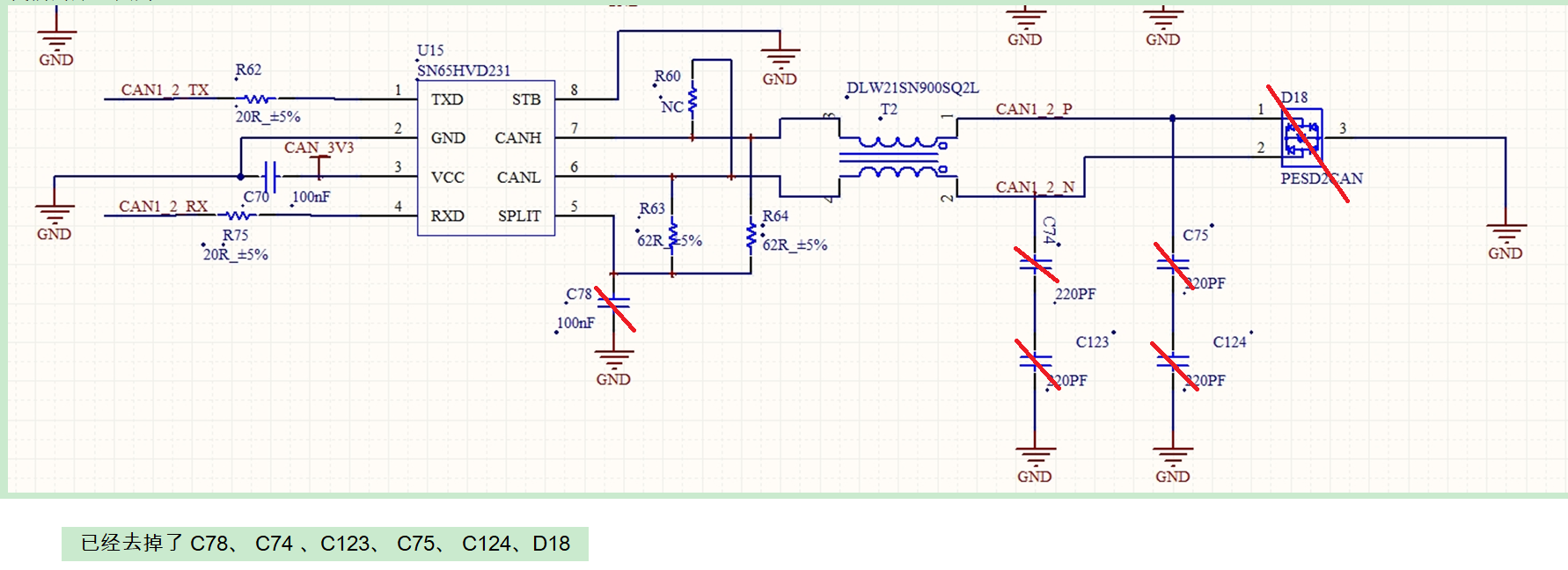Hi,
We use the SN65HVD231 in T-BOX,we find CANH waveform like below @ 3.3V CAN, but we use 5V CAN isn't any problem.
set up on car connect with other 5V CAN. What caused it?
circuit as below, and del C78、 C74 、C123、 C75、 C124、D18 also could not be improved.
Many thanks.
I used 3.3V CAN in 5-V CAN Systems. when bus impedance is 120ohm, the OBD can receive T-Box signal.
but when bus impedance is 60ohm, the OBD can't receive T-Box signal.
What causes the OBD receives signals to fail?




